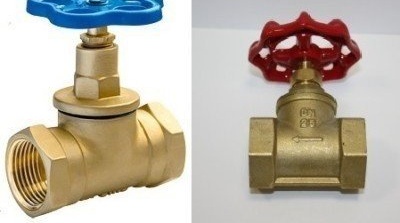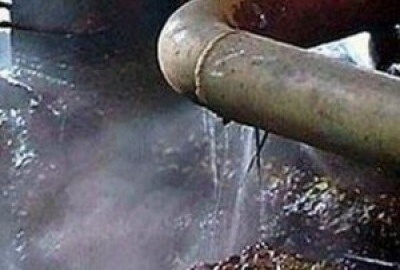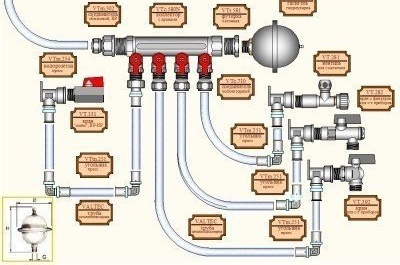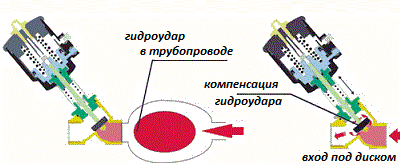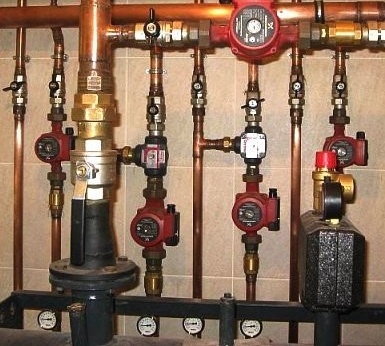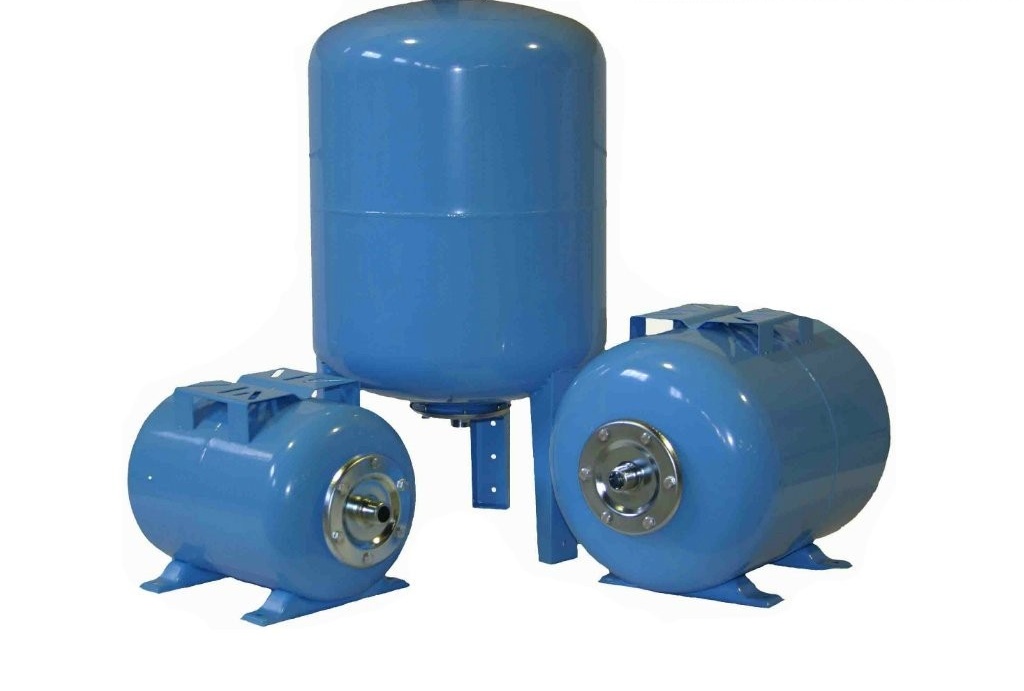The nature of water hammer in water supply and heating systems + methods of protection against it
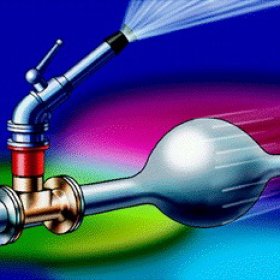
According to statistics, about 60% of all destruction (breakthroughs) of pipelines occur due to water hammer, which is a short-term, sharp and significant pressure drop in the pipe, resulting from a sudden change in the fluid flow rate. The usual signs accompanying this serious nuisance are clicks, knocking and other noise that occurs in communications that supply us with water and heat. Many do not even pay attention to them, and after all, a water hammer in the water supply system leads to equipment damage, cracking, and pipe splitting. Accurate compliance with the rules for the operation of pipelines and the modernization of engineering networks will help prevent an emergency.
Content
The nature of water hammer, possible causes
Owners of private houses with illiterate engineering communications often hear a characteristic click and knock, which indicate that in a closed system there was a short-term sharp increase in pressure as a result of a sudden cessation of fluid movement along the circuit or a sudden resumption of its circulation.
When a fluid flow moving at a certain speed collides with an obstacle (air or shutoff valves), its speed does not change immediately, but the volume increases rapidly, the pressure increases and sometimes reaches 10 or more atmospheres. If the "surplus" has nowhere to go, then there is a risk of pipe rupture.
Possible causes of water hammer:
- start, stop and breakdown of the pump or its emergency shutdown;
- air in the system;
- sudden stop of fluid flow in the circuit caused by quick opening-closing of shutoff valves: valves, gate valves, etc.
The latter reason is the most typical since valve valves, with their smooth running, have been replaced by more modern and “sharp” ball bearings.
If air is not removed from the system, then when the ball valve is opened, the air mass collides with a practically incompressible fluid, as a result, the pressure value can increase to several tens of atmospheres. Such a regular “strength test” has a very negative effect on the condition of the system as a whole and pipes in particular, and it is not difficult to predict the outcome.
Inspiration of the heating system is a common problem. Learn how to bleed air from batteries in our article:https://aquatech.tomathouse.com/en/uchebnik/oborudovanie/kran-maevskogo.html.
Unpleasant consequences and methods of protection against water hammer
A barrier that unexpectedly arises in the path of fluid flow generates pressure, which, theoretically, can grow infinitely. At the same time, the rigid elements of the system are under severe stress and gradually or sharply destroyed.
Accidents caused by water hammer in the heating system are accompanied by a number of characteristic troubles:
- destruction of pipelines and equipment of heating networks;
- rupture of heating appliances;
- burn injuries;
- prolonged cessation of heat and water supply;
- flooding of the home and property damage.
Long pipelines, for example, a warm floor, are most vulnerable to water hammer. To secure the "underground" system, it is equipped with a thermostatic valve, the installation of which must be entrusted to good specialists, otherwise another risk factor will appear in the system.
Competent protection of heating systems or water supply from water shocks is aimed at reducing their intensity and neutralizing the effects of excessive pressure.
No sudden movements
The easiest way to protect yourself from water hammer is to smoothly turn on and off the shutoff valves. This nuance is clearly spelled out in the standards for the operation of centralized water supply facilities and heating systems. The rule without any reservations can be extended to autonomous networks.
The bottom line is that smooth on and off stretch the process of increasing pressure over time. The energy of hydroblow does not act with all its strength at a time, but is distributed over several time periods. In this case, although the total impact force remains the same, but the power decreases.
Option using automation
The smooth start and stop of the engineering system can be completely entrusted to automation. Pumps with automatic speed control of the electric motor smoothly raise the pressure in the pipes after starting, and also systematically act in the reverse order. Software equipment not only monitors pressure changes, but also performs automatic pressure control.
The best effect is given by a comprehensive modernization of the system, which will help prevent water hammer in the pipes. It includes a number of different activities.
Water shock compensators, dampers, hydraulic accumulators
An important element in heating and water supply systems is the shock absorber (aka damper, aka accumulator) - a device that performs three important tasks at once: it accumulates (accumulates) liquid; takes excess fluid from the system, thereby helping to reduce pressure in it; accordingly, contributes to the quenching of water hammer, if it occurs.
The compensator is a sealed steel tank with an elastic membrane and an integrated air valve. The volume can be either completely insignificant or quite large.
Interesting! In Europe, if a hydraulic compensator is not installed in the network, a guarantee for household appliances, such as a washing machine, boiler or dishwasher, is not issued.
Water hammer protection valve
To protect the pumping station, in the event of a sudden stop of the pump, for example, a special diaphragm type hydraulic shock protection valve with a rigid seal is used. It is driven by fluid pressure and has a very useful function of rapid pressure relief. Install it after the check valve, at the branch from the pipeline, next to the pump.
The valve is a reliable fuse in pressurized systems.
Install shock absorber
Installing a shock-absorbing device (pipes made of plastic or heat-resistant rubber) in the direction of fluid circulation in front of the thermostat is an effective method of protection. The elastic material spontaneously extinguishes the energy of water hammer. Sufficient length - 20-30 cm, for a very long pipeline, the shock absorber can be increased by 10 cm.
Home shunting
Anyone who is well acquainted with the design of the thermostat can install a shunt in the thermostatic control valve with a clearance of 0.4 mm or simply make a hole of the same diameter. Under normal operating conditions, such an innovation will not affect the system in any way, but during overloads it will smoothly reduce pressure.
Important! Shunting as a method of protection against water hammer is applicable only to stand-alone networks with new pipes. The sediment and rust of the central communications make it completely ineffective.
Super protection thermostat
Sometimes a thermostat with special protection against water hammer is used. Such devices have a spring mechanism mounted between the valve and the thermal head. With overpressure, the spring is activated and does not allow the valve to completely close, as soon as the power of the hydraulic shock decreases, the valve closes smoothly. Such a thermostat is installed strictly in the direction of the arrow on the body.
Read more about thermostats in our next article:https://aquatech.tomathouse.com/en/otoplenie/radiatory/regulirovka-temperatury.html.
Water hammer in water and heat supply systems is a fairly frequent and dangerous phenomenon, but there are many ways by which you can neutralize the unpleasant consequences of this phenomenon and extend the life of household appliances and pipes.
